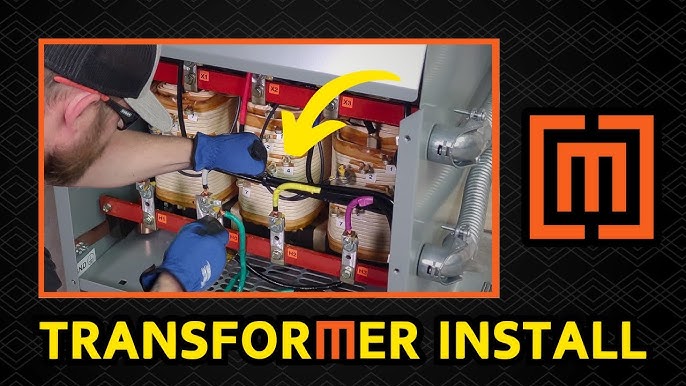Common Mistakes in Transformer Installation

Transformers are vital components in electrical systems, ensuring the efficient transfer of power between circuits. Proper installation is crucial for their performance, safety, and longevity. However, common mistakes during installation can lead to reduced efficiency, increased maintenance costs, or even dangerous situations. This article will discuss some of the most frequent errors made during transformer installation and how to avoid them.
1. Improper Site Selection
Choosing the right location for transformer installation is essential. One common mistake is placing the transformer in an area prone to flooding or poor ventilation. Transformers need to be installed on stable ground with proper drainage to prevent water damage. Additionally, adequate airflow is crucial to avoid overheating. Ensure the site is clean, dry, and away from potential hazards like chemicals or flammable materials.
2. Inadequate Foundation
Transformers are heavy equipment and require a solid foundation to support their weight. Using a weak or uneven base can cause vibrations, leading to internal damage over time. Always ensure the foundation is designed to handle the transformer’s weight and size. It should also be level and constructed with durable materials like reinforced concrete.
3. Improper Grounding
Grounding is a critical safety measure in transformer installation. One common error is neglecting to ground the transformer properly or using inadequate grounding techniques. Poor grounding can lead to electrical shocks, equipment failure, and safety hazards. Always follow the manufacturer’s grounding specifications and use high-quality grounding rods and conductors to ensure safety.
4. Ignoring Load Calculations
Transformers are designed to handle specific loads. Installing a transformer without conducting proper load calculations can result in overloading or underloading. Overloading can cause overheating and reduced lifespan, while underloading leads to inefficient operation. Always calculate the expected load and choose a transformer with an appropriate capacity.
5. Improper Connections
Another common mistake is incorrect wiring and connections. Faulty connections can lead to short circuits, voltage imbalances, and operational failures. Ensure all connections are made according to the wiring diagram provided by the manufacturer. Double-check the polarity, phase sequence, and voltage ratings before energizing the transformer.
6. Neglecting Oil and Insulation Checks
For oil-filled transformers, the quality and level of insulating oil are crucial. A common oversight is failing to check the oil for impurities or ensuring it is at the correct level. Contaminated or insufficient oil can lead to overheating and insulation breakdown. Regularly test the oil for moisture, acidity, and dielectric strength, and replace it if necessary.
7. Lack of Surge Protection
Surge protection is often overlooked during transformer installation. Lightning strikes or power surges can damage the transformer, leading to costly repairs or replacements. Install surge arresters and other protective devices to safeguard the transformer against unexpected voltage spikes.
8. Improper Ventilation and Cooling
Transformers generate heat during operation, and proper cooling is essential to maintain their performance. Installing a transformer in a confined or poorly ventilated space can lead to overheating. Ensure there is enough clearance around the transformer for air circulation and consider additional cooling systems, like fans or radiators, for larger transformers.
9. Skipping Pre-Installation Tests
Many installers skip essential pre-installation tests to save time. These tests, such as insulation resistance tests and winding resistance tests, are crucial for identifying potential issues before commissioning. Always conduct the recommended tests to ensure the transformer is in optimal condition and meets safety standards.
10. Neglecting Safety Precautions
Safety is paramount during transformer installation, yet many teams neglect basic precautions. Failing to use proper personal protective equipment (PPE) or not adhering to safety guidelines can result in accidents. Always follow industry-standard safety practices, provide training for the installation team, and ensure all tools and equipment are in good condition.
11. Incorrect Transport and Handling
Transformers are delicate despite their robust appearance. Mishandling during transportation or installation can cause physical damage to the components. Use proper lifting equipment and follow the manufacturer’s handling instructions to avoid damage. Inspect the transformer thoroughly upon delivery to ensure it hasn’t sustained damage during transit.
12. Overlooking Maintenance Requirements
Many installers assume their job ends after the transformer is commissioned. However, overlooking maintenance requirements can lead to premature failures. Create a maintenance schedule that includes regular inspections, cleaning, and testing. This proactive approach will ensure the transformer operates efficiently for years.
13. Improper Earthing of Neutral
For transformers with a neutral connection, improper earthing is a common mistake. Failing to earth the neutral properly can cause voltage imbalances and operational issues. Always ensure the neutral is correctly earthed as per the manufacturer’s specifications.
14. Failure to Follow Manufacturer’s Instructions
Every transformer comes with specific installation guidelines provided by the manufacturer. Ignoring these instructions is a common mistake that can lead to operational inefficiencies or void warranties. Always refer to the manual and consult the manufacturer if there are any doubts or questions.
15. Rushing the Installation Process
Transformer installation is a complex process that requires attention to detail. Rushing through the installation can lead to mistakes, such as loose connections or overlooked safety checks. Take the time to plan, execute, and verify each step of the installation process to avoid costly errors.
Why Choose Manikaran Enterprises
For reliable Transformer Installation and Commissioning Services in India, trust Manikaran Enterprises. Our expert team ensures precise installation, safety, and optimal performance for your transformers.
Conclusion
Transformer installation is a critical task that demands precision, planning, and adherence to safety standards. Avoiding the common mistakes mentioned above can ensure the transformer operates efficiently, safely, and for its intended lifespan. Always rely on trained professionals, follow manufacturer guidelines, and conduct regular maintenance to keep your transformer in top condition. By taking these precautions, you can prevent unnecessary downtime, reduce costs, and ensure the reliability of your electrical system.







